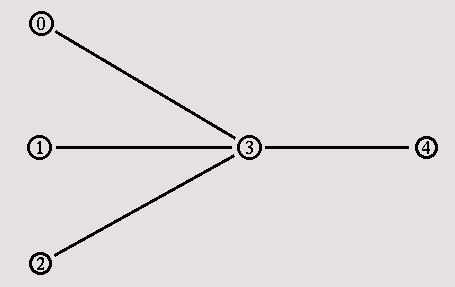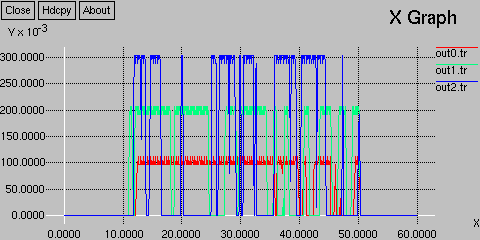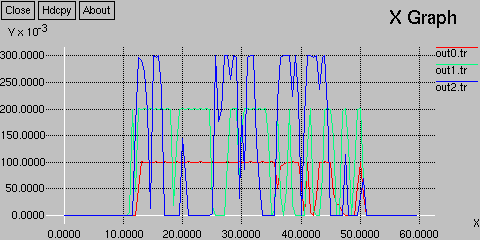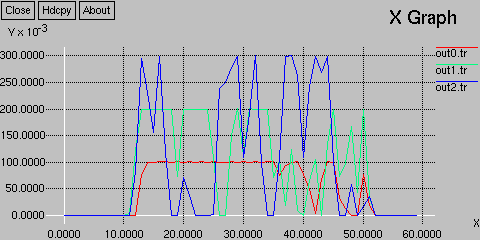


Tutorial Stuff
Basics
The basic idea is that we have a series of nodes (which can be alikened to eth0) connected by links (like a cable). We create a 'node' object by:
set n0 [$ns node]
and a duplex-link like this:
$ns duplex-link <$from_node> <$to_node> <$pipe_thickness> <$delay> <$type>
usually, $type is of DropTail.
Then for each node, we must assign an 'Agent'. In the examples of the tutorials, we use UDP datagrams. This is done via,
set <source_name> [new Agent/UDP]
and to assign the Agent to a node we define,
$ns attach-agent <$node> <$source>
for each type of agent, there are various parameters such as packetSize_ etc. which can be defined.
We must also assign the type of traffic that will flow on the link using,
set <traffic_type> [new Application/Traffic/<type>]
and setting it to the <source_name>
<$traffic_type> attach-agent <source_name>
As the definition language for the Agents, Nodes and Links are written in oTcl, we can use for and if loops to define a mesh of objects.
Jumping a few tutorials, i Implemented a simple network like this:

In this case, nodes {0,1,2} generate exponential UDP traffic of Agent type Application/Traffic/Exponential, with rates of {100k, 200k, 300k}, all towards node 4. We want to monitor the outcome of the traffic at node 4. The Tcl file is here.
To monitor a sink, we have to assign a [new Agent/Loss Monitor] to each. eg.
set <sink> [new Agent/LossMonitor]
We also need a record procedure that outputs the results of each sink to a file, each time resetting the total amount of data held inside each LossMonitor Agent. We then have to respawn this procedure from within so that it takes readinds every $time seconds.
we write to a file using:
puts <$file_handle> "text"
In order to do anything, we have to define start and stop points for ns, and we do this through:
$ns at <time> "<$source_traffic> {start|stop}"
And finally run the simulation with
$ns run
Results
with 0.1 second readings:

with 0.5 second readings:

with 1.0 second readings:

The main difference's is the resolution of the results.
Another Example

Set a queue length of n between two nodes,
set queue-limit <$node1> <$node2> <n>
| Thu, 24 January, 2002 17:57 |
Room D14, High Energy Particle Physics, Dept. of Physics & Astronomy, UCL, Gower St, London, WC1E 6BT